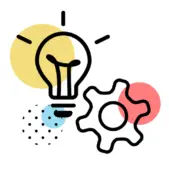As organizations scale and evolve, aligning departments around shared goals becomes more complex. Cross-functional collaboration, transparent communication, and streamlined workflows are more critical than ever. In the hybrid and remote work age, disconnected teams can lead to inefficiencies and missed opportunities. Fortunately, a modern digital workplace platform—commonly referred to as an intranet—can be a powerful enabler.
A modern intranet isn’t just a file repository or bulletin board. Today’s platforms are intuitive, integrated, and mobile-friendly, designed to support productivity, foster community, and drive business results.

Why a Modern Employee Experience Platform Matters
Here are some specific ways the integration of an employee experience platform can help your organization achieve its goals:
- Seamlessly distribute vital information for anytime access. This may include appointments, slide shows, meeting notes, memos, etc.
- Set permissions so that all company-related data can be disseminated but only accessed by parties granted authorization
- Boost collaboration between departments without reliance on physical meetings
- Improve communication efficiency through an instant messaging application
- Automate Here are key ways a thoughtfully designed intranet platform can empower your organization:
- Centralize information access: Share news, documentation, policies, and resources in one easily searchable hub.
- Enable secure collaboration: Control access with permissions while allowing seamless collaboration across departments and geographies.
- Support hybrid teams: Ensure remote, in-office, and hybrid employees all have equal access to tools and updates.
- Streamline workflows: Integrate with tools like Slack, Teams, Google Workspace, or Microsoft 365 to reduce app-switching and manual tasks.
- Drive engagement: Use interactive features like social feeds, polls, kudos, and embedded video to build culture and connection.
- Enhance employee autonomy: Equip employees with self-service capabilities for tasks like time-off requests, HR forms, or knowledge base lookups, payroll, invoicing, inventory management, and pricing
Employee Adoption: The Key to Success
Even the most feature-rich platform will fail if employees don’t use it. Ensuring buy-in starts with a user-centered approach.
Best Practices for Intranet Adoption:
- Start with employee research: Interview and survey staff to understand needs, frustrations, and desired features. Prioritize solving real pain points.
- Design for usability: The interface should be intuitive and responsive across devices. Reduce cognitive load with clear navigation and smart search.
- Prioritize must-have features: Focus on functions like knowledge sharing, chat integrations, and team workspaces that boost day-to-day productivity.
- Pilot and iterate: Roll out the intranet in phases, gather feedback, and refine based on real usage and sentiment.
- Offer modern onboarding and support: Use video walkthroughs, in-app tips, and help bots to assist users without disrupting their workflow.
Launching for Success
A strategic rollout can make or break adoption. Partnering with a UX-focused consulting firm can give you a competitive edge.
Look for partners who offer:
- Deep UX research and strategy
- End-to-end design and development services
- Real-world usability testing
- Post-launch analytics and optimization
Firms like UpTop, with proven experience in creating high-performing digital workplaces, can help your organization build a platform employees want to use.
Final Thoughts
The workplace has changed, your employee experience platform should reflect that. With a user-centered approach, the right technology, and strategic implementation, your employee experience platform can drive productivity, engagement, and culture.
Want expert guidance on launching a modern employee experience platform tailored to your workforce? Contact UpTop to get started.


